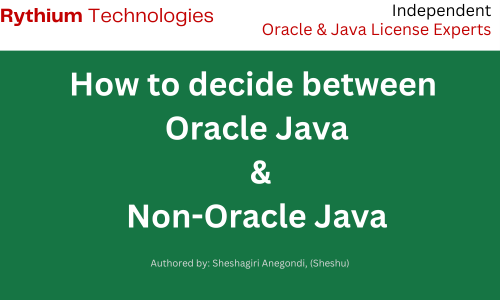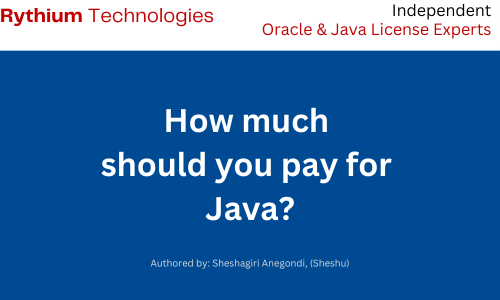Java has been one of the most popular programming languages for decades, used in everything from enterprise applications to mobile development. However, recent changes in Oracle’s licensing policies have sparked widespread discussions about Java licensing costs. Many businesses and developers are now asking: Is Java free? The answer to this question depends on how Java is used and which version is being implemented. In this article, we will break down Java’s licensing costs, clarify the different versions available, and help businesses and developers understand what is free and what is not.
The Evolution of Java Licensing
For years, Java was freely available under the Sun Microsystems’ leadership and continued to be free after Oracle acquired Sun in 2010. However, in 2019, Oracle introduced a new subscription-based licensing model for its Java SE (Standard Edition), creating confusion and uncertainty in the developer community.

Previously, businesses could use Oracle’s Java without worrying about licensing fees. But under the new model, users who need commercial support and updates must pay a subscription fee. This shift has led many to explore alternative versions of Java that remain free.
Is Java Free? Understanding the Different Versions
To answer the question Is Java free?, it’s essential to distinguish between the different distributions available. Java exists in multiple forms, and each comes with different licensing implications.
1. Oracle JDK (Java Development Kit)
Oracle JDK was historically the go-to version for enterprise users, but since 2019, Oracle has changed its licensing terms. Now, commercial use of Oracle JDK requires a subscription. If businesses continue using Oracle JDK without a valid license, they risk violating Oracle’s terms and potentially facing legal or financial consequences.
2. OpenJDK (Open Java Development Kit)
OpenJDK is an open-source implementation of Java and remains free to use under the GNU General Public License (GPL) with Classpath Exception. Many companies have switched to OpenJDK to avoid paying Java licensing costs. However, OpenJDK does not offer long-term support (LTS) from Oracle, meaning users must rely on community support or choose distributions backed by other vendors.
3. Other Java Distributions
Several organizations provide their own distributions of OpenJDK with long-term support and additional features. These include:
Adoptium (Eclipse Temurin): A popular, free OpenJDK build with community support.
Amazon Corretto: Amazon’s free distribution of OpenJDK with long-term support.
Red Hat OpenJDK: A Red Hat-supported OpenJDK distribution, often used in enterprise environments.
Azul Zulu: A commercial Java distribution with both free and paid options.
IBM Semeru: IBM’s OpenJDK variant with enterprise support.
Choosing the right Java version depends on an organization’s specific needs, whether it requires enterprise support, security patches, or simply a free Java runtime for development.
Breaking Down Java Licensing Costs
Oracle’s Java licensing costs are based on a subscription model, and the pricing varies depending on the number of users and computing power. Below is a basic outline of the cost structure:
Per-User Pricing: Oracle charges a fee per named user, commonly applied in desktop environments.
Per-Processor Pricing: For server environments, Oracle licenses Java based on the number of processors in use.
Enterprise Pricing Plans: Large organizations may negotiate customized pricing with Oracle.
For small businesses and individual developers, these costs can quickly add up. This is why many have shifted to OpenJDK or other free distributions to avoid licensing fees.
How to Avoid Java Licensing Costs

Since Java licensing costs can be substantial, businesses and developers should consider the following strategies to minimize expenses:
Switch to OpenJDK or Alternative Distributions Many organizations have already moved away from Oracle JDK to OpenJDK-based distributions. OpenJDK is functionally equivalent to Oracle JDK but is free to use.
Use Oracle JDK Only for Development Oracle allows free use of Java SE for development, testing, and personal use. However, deploying Oracle JDK in a production environment without a license can lead to fees.
Monitor Java Usage Organizations should conduct an internal audit to understand their Java usage and determine whether they need a paid license or can transition to a free alternative.
Consider Vendor-Supported OpenJDK Versions If enterprise support is necessary, companies can choose vendor-backed OpenJDK versions like Amazon Corretto, Red Hat OpenJDK, or Azul Zulu.
The Future of Java Licensing
As Oracle continues to refine its licensing policies, businesses and developers must stay informed about changes to Java licensing costs. OpenJDK and other free distributions are becoming increasingly popular, ensuring Java remains accessible to all.
For those wondering, Is Java free?, the answer is yes—but with some caveats. Developers and businesses must carefully assess their needs and choose the right Java distribution to balance cost, support, and long-term sustainability.
Conclusion
Java remains a critical technology in modern software development, but its licensing costs have created new challenges for businesses. Understanding Java licensing costs and answering the question Is Java free? requires careful evaluation of the different distributions available. By exploring alternatives like OpenJDK and vendor-supported versions, organizations can continue using Java while avoiding unnecessary expenses. Whether you are a developer, IT manager, or business owner, staying informed about Java licensing will help you make the best decision for your needs.









